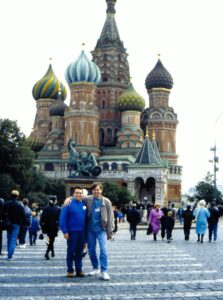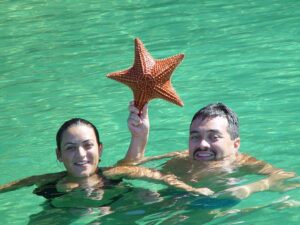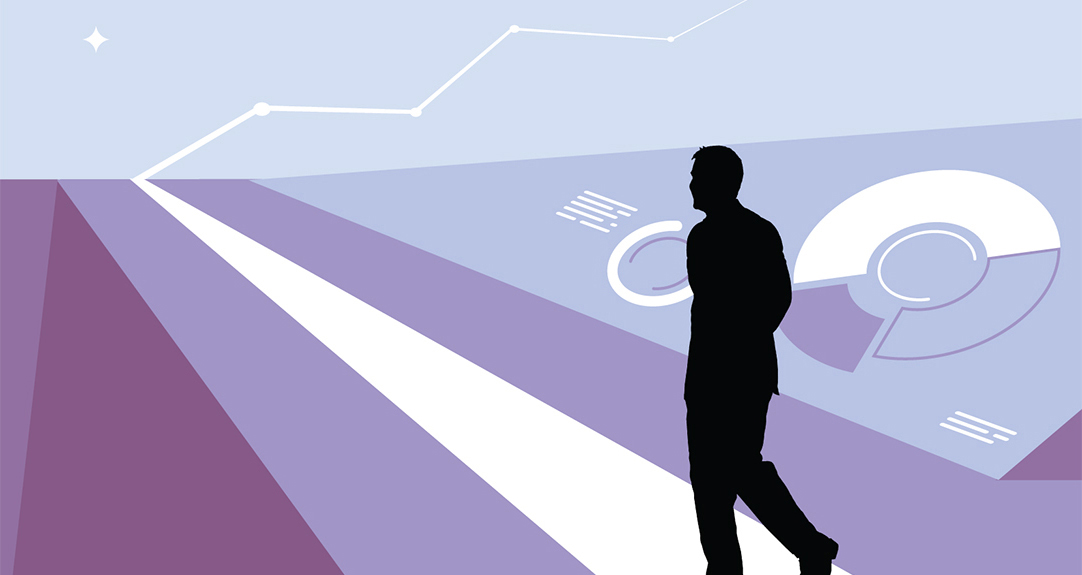Crafting a Unique Actuarial Career
Lessons learned over a nearly 40-year career in the international and startup spaces
June 2023Having worked as an actuary since 1985, primarily in the international realm, I was honored when asked to write an article for The Actuary magazine’s June 2023 International issue. Given that I am close to the end of my actuarial career and looking forward to retirement, I have chosen to write an article that shares my knowledge gained over the years for the benefit of other actuaries seeking a similarly unique and exciting career working for an international company or a startup.
An International Focus
Raised along the United States-Mexico border in El Paso, Texas, I excelled in mathematics during high school (like most actuaries I know!). The conventional wisdom back then was to apply this skill to become a high school mathematics teacher or engineer—both respectable professions but, unfortunately, not a good match for me. Having accompanied my entrepreneurial father on many of his business trips along the border from Texas to California, I discovered an international career mixed with mathematics was a better fit. I was curious which profession ultimately would provide me with the desired intersection between international business and mathematics and leverage my bicultural and bilingual (English and Spanish) background.
I rolled the dice and accepted an admissions offer to study applied mathematics to econometrics at Harvard University. An outplacement counselor gave me the best advice of my college years: “Study your passion, and do not worry about your future profession. It will eventually surface.” As predicted, during my junior year at Harvard, an actuary from Boston presented on the actuarial profession, which impressed me. I was intrigued by this unfamiliar but interesting profession that was ranked the No. 1 career at that time. This encounter ultimately led me to work as an actuary.
In the 1980s, the North American Free Trade Agreement (NAFTA) among Canada, the United States and Mexico was the external catalyst that ushered in a new chapter in my actuarial career. I realized that my bilingual capability and willingness to travel throughout Latin America gave me unique, in-demand skills that complemented my actuarial experience.

Serendipity struck after returning from an exciting Venezuelan vacation when a recruiter called and asked if I was bilingual and willing to travel throughout Latin America for an insurance company based in New Orleans. Intrigued, I jumped at this unique opportunity.
For the next 20 years, I worked for several American and European insurance companies within their international divisions. During this time, I visited most countries in the Western Hemisphere, from Argentina to Canada, as well as Russia, Hungary and Poland. Here are some of the more memorable sites I saw and events I attended during the 20-year period when I worked and traveled internationally as an actuary:
Russia
- Museum behind the Kremlin wall
- Changing of the guard at Lenin’s tomb
- The 1993 Russian Constitutional Crisis while visiting Moscow, which forced me to leave Russia early due to this political chaos
Poland
- Auschwitz
Brazil
- Statue of Christ the Redeemer in Rio de Janeiro
- Sunset at Sugarloaf Mountain in Rio de Janeiro

My international experience also included working two years as an expatriate actuary in Rio de Janeiro with my family accompanying me. Rio is where my daughter was born and where I learned Portuguese. My high school dream was realized.
Life’s journey can also be unpredictable and treacherous. The 2007-08 financial crisis reminded me that external events can negatively impact your career. The international department of the European insurance company where I worked was sold, resulting in my work eventually shifting to U.S. actuarial consulting. This trial and tribulation phase accelerated my character growth through increased patience, deepened faith and heightened appreciation of family and friends.
A Startup to Finish My Career
Eventually the storm passed, and a truly unique actuarial opportunity presented itself. I began working for Slope Software, Inc., a cloud-hosted actuarial software company. I am now the lead architect for Slope’s International Financial Reporting Standard (IFRS) 17 solution.
I realize that working for a startup might not be for everyone, especially someone like me nearing retirement. Most employees working for startups in the shared coworking space where Slope is headquartered are between 25 and 45 years old. There are few boomers like me in this arena. Startups remind me of professional sports teams, where promising rookies work alongside more experienced teammates to make the ideal team.
Organizational equilibrium seems desirable to me. Rookie talent and youthful input bring a lot to the table, pushing an organization to adapt to the latest trends and technology—but so do the experience and wisdom of seasoned teammates. Diversity in age, talent, language and culture are key, I believe, to any startup in the international realm.
The future is bright and exciting if you have an entrepreneurial spirit, great teammates, a novel actuarial software platform and a hard work ethic. What is most exciting about working for Slope is that employees have the creative freedom to contribute significantly to the company’s success. For me, this included developing template models for structured assets (MBS, CDOs, ABS), structured settlements, interest rate swaps, clustering and dynamic hedging models based on machine learning (ML) tools. The capstone of my career is developing Slope’s IFRS 17 market value-based international insurance accounting solution, which is exciting but requires that all my cylinders fire at full capacity!
Working for a startup is consulting on steroids. My role requires me to wear many figurative hats. I am the primary contact for some of our clients, requiring me to have a personable and helpful attitude. I also provide client demonstrations in Spanish or Portuguese as needed.
Never Stop Learning
Just like a forest fire that ultimately results in a forest rebirth, the COVID-19 pandemic provided me with an opportunity to invest in myself. I was forced to exercise through morning walks instead of going to the gym, which was closed during the pandemic. These extended walks allowed me to learn new skills by listening to podcasts. I chose to learn about ML and stock option trading.
The ML applications I learned about included data clustering techniques and predicting future stock option prices. Clustering was developed based on the need to accelerate processing time for clients with very large seriatim model point files. Predicting future option chain prices was a critical and daunting challenge for dynamic hedge modeling. ML techniques provided a fast and accurate alternative to predicting future option chain prices compared to using the first principles Black Scholes formula, which is runtime-intensive.
I worked for a large U.S. insurance company that failed during the 2007-08 financial crisis due to large inadequately hedged variable annuity risks. I wonder whether an optimal hedging strategy could have helped avoid this fate, which unfortunately affected many employees and their families just like mine.
I also have been able to use this knowledge for my personal investment management. I now manage my IRA retirement assets and personal savings through an online brokerage account that allows me to leverage my asset holdings by trading stock options. Actuaries are trained to understand the dynamic relationships between insurance liability portfolios and insurance companies’ investment assets. By extension, actuaries are also well suited for managing portfolios of stock options for hedging and speculative purposes. Active options portfolio management can hedge or enhance insurance company financials as well as generate personal passive income.
Career Lessons: A Checklist
Here are the key personal lessons I learned over my actuarial career, which were woven throughout this article:
- Take smart risks.
- Study your passion in college—do not worry about your ultimate profession.
- Master at least one foreign language.
- Be flexible and open to unique actuarial opportunities.
- Leverage external events to create a unique actuarial career.
- Remember that external events also can have negative impacts on your career.
- The only constant in life is change.
- Character is developed during bad times, not good times.
- Age is a number. Experience can be very valuable for a startup.
- Communication skills are important.
- Work hard, play hard and spend time with family and friends.
- Diversity of age, talent, language and culture are important to international success.
- Never stop learning.
Crafting my nontraditional actuarial career path included international and entrepreneurial dimensions as well as a willingness to learn new skills, like ML and stock option trading, late in my career. I hope you can leverage the lessons learned over my nearly 40-year actuarial career to pursue your professional happiness. Best of luck!
Statements of fact and opinions expressed herein are those of the individual authors and are not necessarily those of the Society of Actuaries or the respective authors’ employers.
Copyright © 2023 by the Society of Actuaries, Chicago, Illinois.

